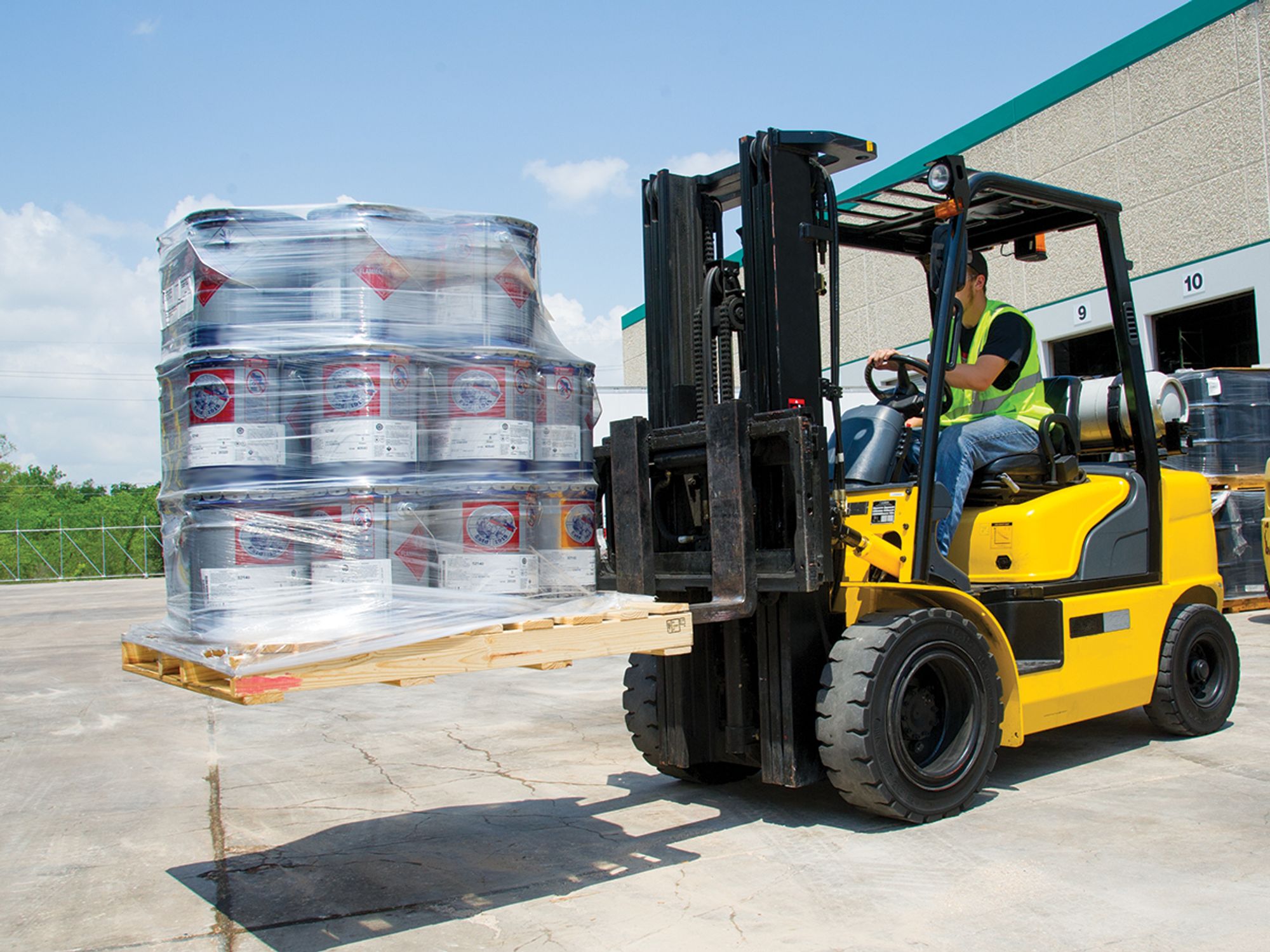General information

- Proper procedures to use while loading and unloading hazardous materials include making sure the parking brake is set, using tools properly to avoid damage to packages or containers, and ensuring there is no smoking on or near the vehicle.
- Hazmat packages should be secured against movement in the vehicle and properly oriented (e.g., “This Side Up”) when required.
Certain procedures must be followed when loading and unloading hazardous materials from a vehicle. These procedures, as set out in the hazardous materials regulations (HMR), are intended to protect anyone who is near the vehicle during the loading and unloading process.
Parking brake
During the loading and unloading of any hazardous materials, the vehicle’s parking brake must be set. In most cases, it’s also a good idea to chock the wheels to prevent the vehicle from moving or shifting in the event of a brake failure. All precautions must be taken to prevent movement of the vehicle.
Tools
Any tools used in loading or unloading hazardous materials must be used with care so as not to harm packages or damage closures on packages or containers. To reduce the chances of a fire, it’s also a good idea to use tools that have low or no spark properties.
No smoking
Smoking on or near any vehicle while loading or unloading any Class 1 (explosives), Class 3 (flammable and combustible liquid), Class 4 (flammable solid), Class 5 (oxidizer), or Division 2.1 (flammable gas) is forbidden. Care should be taken to keep all fire sources (matches and smoking materials in particular) away from any vehicle hauling these materials.
Orientation markings
Packages that display orientation markings such as “This Side Up” or up arrows, must be loaded according to those markings. Those packages must also remain in the correct position as indicated by the markings throughout the transportation process.
Securing packages
Packages containing any hazardous materials not permanently attached to a vehicle must be secured against any movement, including shifting or movement between packages during normal transportation. Packages having valves or other fittings must be loaded in a way that minimizes the chances of damaging the valve or fitting during transportation.
Cargo heaters
Typically, the regulations do not allow Class 1 (explosives), Division 2.1 (flammable gases), and Class 3 (flammable liquids) to be loaded or transported in transport units equipped with cargo heaters (including automatic cargo heater/air conditioner units) unless the cargo heater is rendered inoperable by:
- Draining or removing the cargo heater fuel tank.
- Disconnecting the heater’s power source.
